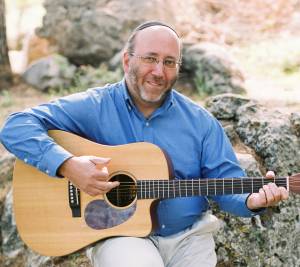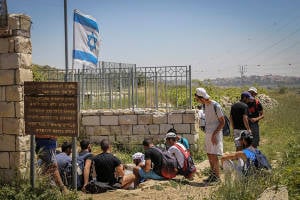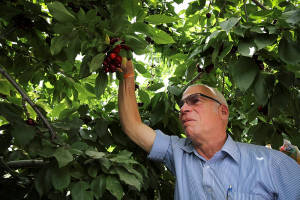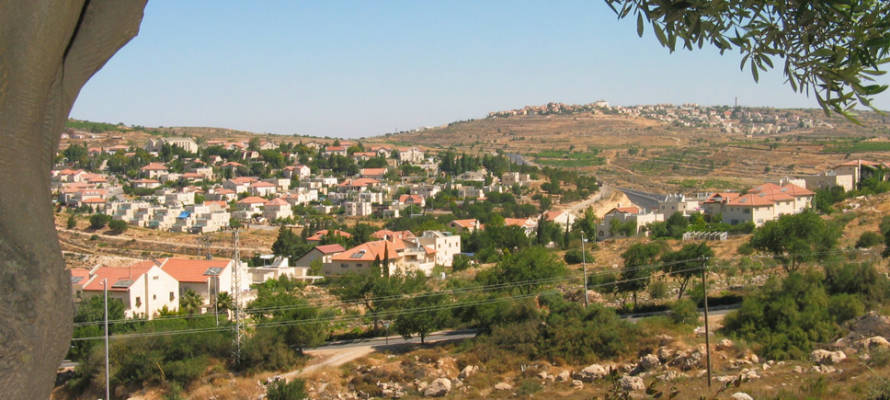
The Jewish connection to Gush Etzion is so deep, it is no wonder that in the 20th century numerous attempts were made to resettle the area.

By Rabbi Moshe Rothchild, licensed tour guide
Just south of Jerusalem, beyond Bethlehem, is Gush Etzion or the Etzion Block, located in the region of Judea. In previous columns, we discussed Neve Daniel and Elazar, which are two communities that are part of Gush Etzion. Today, we will explore the area more deeply and learn why this area is called Gush Etzion.
Historically speaking, this area is the scene of many Biblical stories. Abraham passed through this area on his way to bringing Isaac to Mount Moriah, the site of the binding of Isaac. This locale is the setting for the Book of Ruth. Jacob buried Rachel in this area, and on these hilltops the future King David cared for his father’s sheep. The Maccabees fought in the hills of Gush Etzion. There are numerous more examples.
The Jewish connection to Gush Etzion is so deep, it is no wonder that in the 20th century, numerous attempts were made to resettle the area. The first was made in 1927, when a group of religious Yemenite Jews from Jerusalem purchased land and inaugurated an agricultural settlement, which they named Migdal Eder (Tower of Eder) for a Biblical tower that once stood in the area, according to Genesis 35:21. They were unprepared for the harsh physical conditions, which, combined with the Arab riots of 1929, forced them to abandon the land.
A second attempt was made in 1935 by a man named Shmuel Holtzman, who launched the village of Kfar Etzion. Holtz in German means tree, hence the name Etzion, which is rooted in the Hebrew word for tree (etz). Repeated attacks from local Arabs forced the end of this second attempt.

Jewish youth seen hiking in the Ancient Path of the Patriarchs in Gush Etzion in May. (Gershon Elinson/Flash90)
A third effort to settle the area was made in 1943, when ultimately four settlements were founded, each connected to a larger ideological group. The four settlements were Kfar Etzion, Massuot Yitzchak, Revadim and Ein Tzurim. The block of settlements was referred to as Gush Etzion. This third attempt met with initial success until the War of Independence in 1948.
The block came under heavy assault already in late 1947, and the aggression continued in to 1948. Most of the women and children were evacuated as the men were left to defend the settlement block. While they put up a valiant effort, in the end they were unable to hold off the Arab invaders led by the Jordanian Legion. According to some accounts, the battle for Gush Etzion ended tragically when the remaining fighters, after the battle was lost, were asked by the Jordanians to gather for a photo – a kind of victory photo. As the Jewish fighters gathered together for the photo, the Jordanians opened fire against them. All in all, 240 men and women were murdered and another 260 were taken captive.
David Ben Gurion, Israel’s first prime minister, eulogized the defenders of Gush Etzion with the following words: “I can think of no battle in the annals of the Israel Defense Forces which was more magnificent, more tragic or more heroic than the struggle for Gush Etzion…. If there exists a Jewish Jerusalem, our foremost thanks go to the defenders of Gush Etzion.”
For the next 19 years until the stunning Israeli victory in the Six Day War, Gush Etzion remained in Jordanian hands. Many of the children of those killed in 1948 returned after the Six Day War to re-establish Gush Etzion and transform it into a thriving area. Today there are 20 communities with a population of over 20,000 that comprises the growing and flourishing area of Gush Etzion.

Israeli Minister of Agriculture Uri Ariel takes in the annual cherry-picking festival at kibbutz Rosh Tzurim in Gush Etzion last week. (Gershon Elison/Flash90)
Strategically, this area represents a buffer to the southern portion of Jerusalem. Gush Etzion has a high standard of living and is considered to be a near-suburb of the Israeli capital. It is less than eight miles from Jerusalem to the first neighborhood of Gush Etzion.
The story of Gush Etzion reflects the long history of the Jewish people spanning antiquity to the modern era. A visit may include the ancient Path of the Patriarchs, Herod’s aqueducts, the Gush Etzion winery and, of course, Kibbutz Kfar Etzion, which features a moving sound and light show about the modern attempts to re-settle the area. The region is not only rich in history, but also offers many fun-filled experiences. One can visit, cor instance, the Lone Tree Brewery and zoom down the longest zip line in the Middle East! Gush Etzion has something for everyone!
